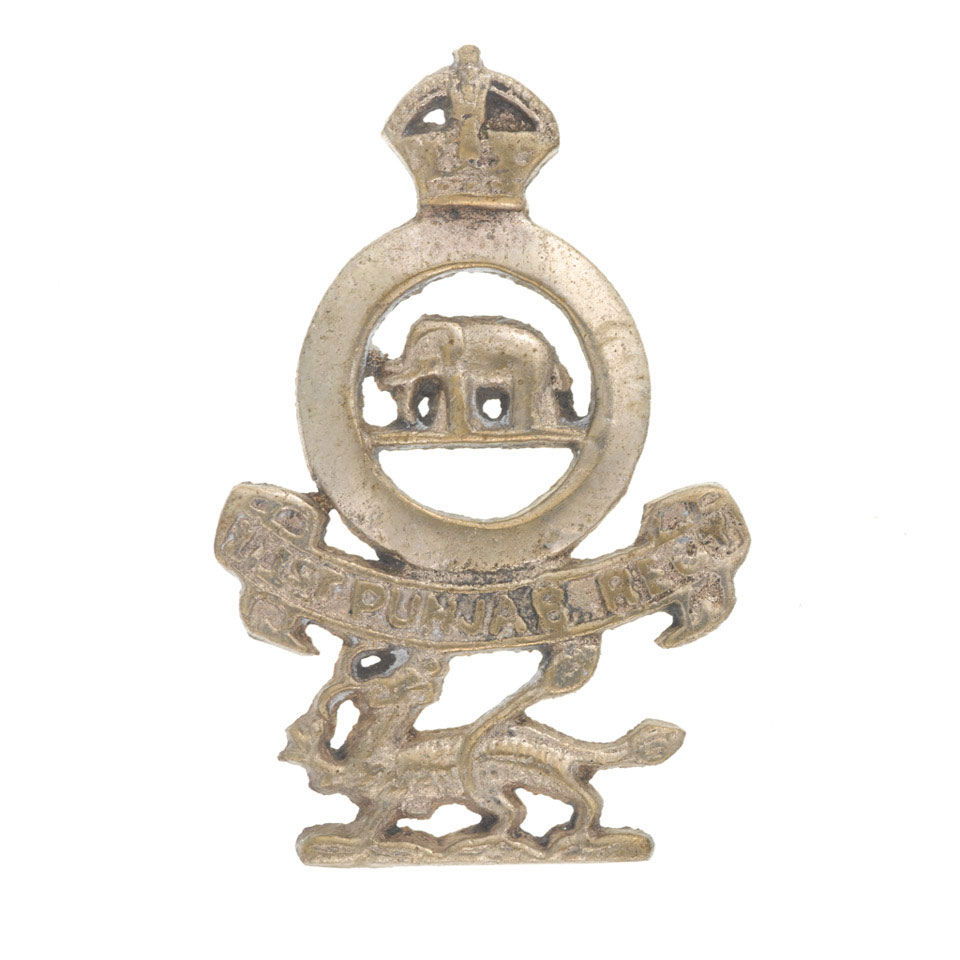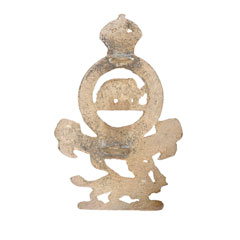
Online Collection
« Prev - 1 of 1 results - Next »
Cap badge, 1st Battalion, 1st Punjab Regiment, 1922-1947
White metal badge with an elephant in centre, within a circlet, surmounted by a King's Crown, with scroll below bearing the abbreviated regimental title '1/1st Punjab Regt', with a dragon below scroll.
The 1st Battalion, 1st Punjab Regiment originated as an East India Company unit, the 3rd Battalion of Coast Sepoys. As the 1st Battalion 2nd Regiment of Madras Native Infantry, the unit fought in the Mysore and Maratha wars, gaining the elephant insignia for its conduct at the Battle of Assaye in 1803. Overseas service followed, as the 2nd Regiment of Madras Native Infantry fought in the 1st China War (1839-1842), gaining the golden dragon as an additional insignia for their colour.
In 1903 the unit was renamed the 62nd Punjabis as part of wider reform of the Indian Army. The regiment fought in the Middle East during World War One (1914-1918), after which the unit became the 1st Battalion, 1st Punjab Regiment. it fought on the North West Frontier between the wars, and then North Africa, the Middle East and Burma during the World War Two (1939-1945). After the war, the battalion was involved in restoring the colonial authority of the British and Dutch Empires in Singapore and the Dutch East Indies (Indonesia) respectively. The unit became part of the new Pakistan Army in 1947. In 1956 the 1st, 14th, 15th and 16th Punjab Regiments were merged into one Punjab Regiment.
From the Field Marshal Sir John Chapple Indian Army Collection.
NAM Accession Number
NAM. 2013-10-20-27-20
Copyright/Ownership
National Army Museum Copyright
Location
National Army Museum, Study collection
Object URL
https://collection.nam.ac.uk/detail.php?acc=2013-10-20-27-20


